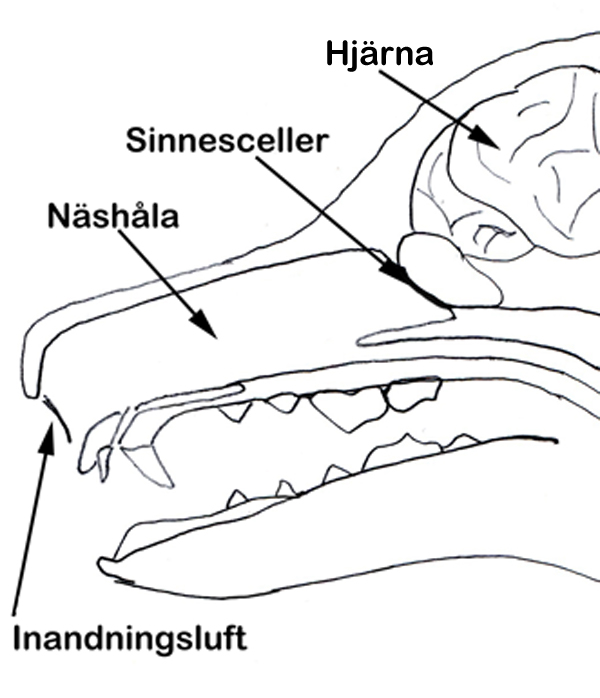Olfaction (smelling)
As for hearing, olfaction is above all important for recognising conspecifics. Olfaction also has importance for food searching and detecing dangers.
It could be said that each species has its own olfaction spectrum that is extra sensitive to smells that are importance for the animal’s survival.
Gaseous odorant molecules follow the inhaled air and are caught by sensory cells in the nasal cavity. The information from the sensory cells is transmitted by nerve signals to the brain, where the smell is interpreted.
With some dissimilarities, the olfactory organs basically have the same structure and function among the production animals. Odorant molecules follow the inhaled air into the animals’s nasal cavity, where sensory cells transmit information to the brain that interprets the smell.

Drawing: Anne Larsen, SLU.